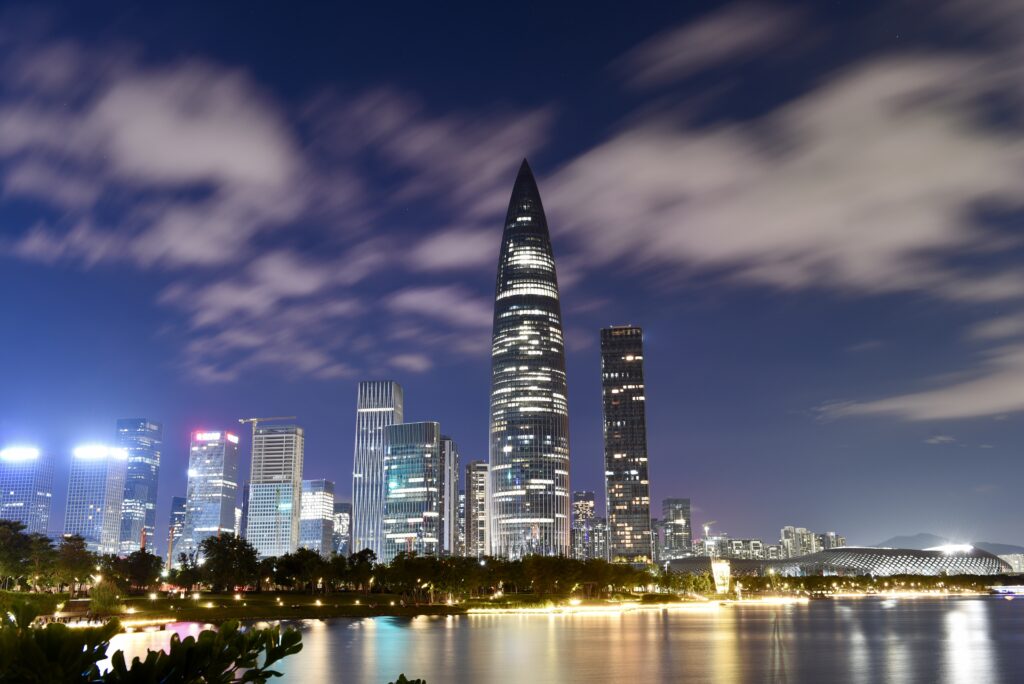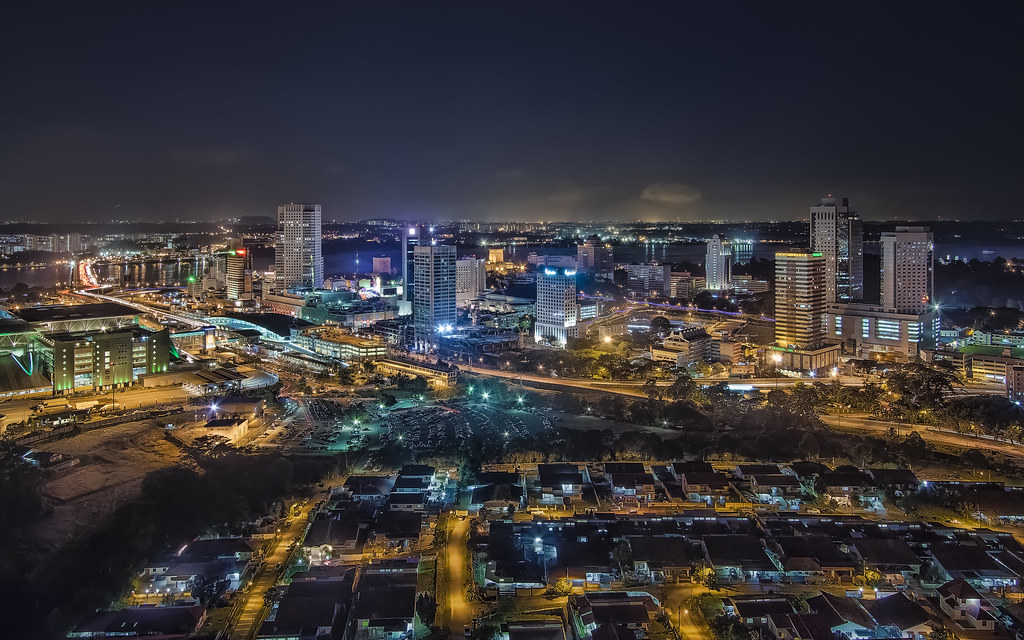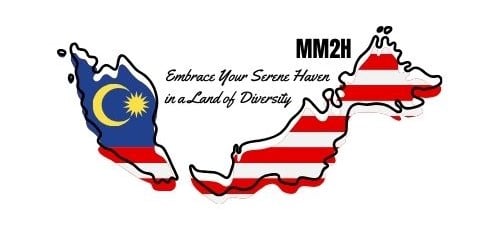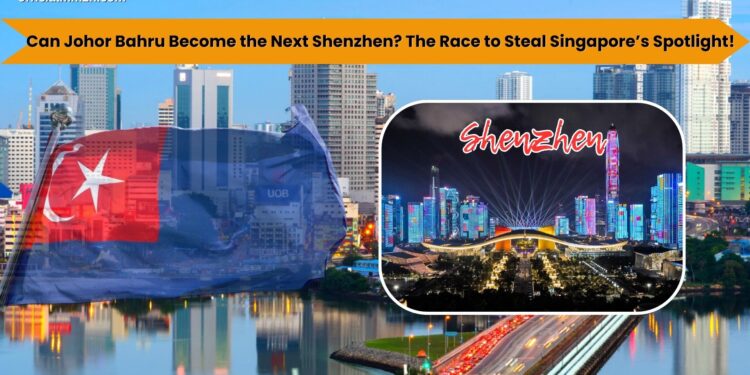Can Johor Bahru Become the Next Shenzhen? The Race to Steal Singapore Spotlight!
Johor Bahru (JB), the southern gateway of Malaysia, sits on the cusp of transformation. Its proximity to Singapore, the world’s fourth-largest financial center, positions JB to become Southeast Asia’s next economic powerhouse. With strategic initiatives like the Johor-Singapore Special Economic Zone (JS-SEZ), JB is leveraging its unique geographic and economic advantages to emulate Shenzhen’s success. But can JB truly follow in Shenzhen’s footsteps? Let’s explore the opportunities, challenges, and what it will take for JB to achieve this ambitious goal.
Learning from Shenzhen

In the 1980s, Shenzhen was a quiet fishing village. Today, it’s one of the world’s leading financial and manufacturing hubs. The secret? Strategic policies, attractive tax incentives, and proximity to Hong Kong, a global financial hub.
Johor Bahru shares similar advantages. Sitting right next to Singapore, JB has access to one of the most advanced economies in the world. Every day, over 145,000 vehicles cross JB’s borders via the Causeway and Tuas checkpoints, underscoring its vital connection to Singapore. But despite this dynamic flow, the economic gap between the two remains stark.
Singapore’s nominal GDP stands at a staggering $500 billion, while JB’s is just $37.6 billion. Yet JB is 25 times larger in land area, giving it enormous potential for expansion and development. What it needs is the right strategy to unlock its capabilities—something the Johor-Singapore Special Economic Zone aims to provide.
The Johor-Singapore Special Economic Zone (JS-SEZ)
Launched in January 2024, the Johor-Singapore Special Economic Zone (JS-SEZ) is a joint initiative to enhance economic collaboration. The JS-SEZ focuses on streamlining business operations, attracting investment, and creating a seamless environment for growth across both regions.
Key initiatives include:
- Streamlined Business Applications: Singaporean businesses can now expand into JB with less red tape, allowing faster setup and operations.
- Improved Border Clearance: Passport-free access and faster customs processes aim to reduce congestion and facilitate the smooth movement of goods and people.
- Competitive Tax Incentives: By offering lower corporate tax rates, the zone attracts high-value industries like fintech, manufacturing, and tourism.
These initiatives aim to position JB as a cost-effective alternative for businesses looking to expand beyond Singapore.
The Cost Advantage
Johor Bahru’s affordability is one of its strongest selling points. In Singapore, prime office rents average $8.90 per square foot per month. In JB, the same space can be rented for as little as $0.56—a fraction of the cost.
Factory rents show an even greater disparity. A ready-built factory in JB costs less than $0.70 per square foot, compared to $1.40 in Singapore. These savings extend to labor costs as well. The median salary in JB is around $1,600 per month, significantly lower than Singapore’s $3,800.
For businesses, these cost differences translate to substantial savings. A 10,000-square-foot factory in JB could save tens of thousands of dollars annually in rent alone. When combined with lower labor costs and other operational savings, JB becomes an incredibly attractive destination for investment.
Forest City: A Key Component
The Forest City project is a vital part of JB’s transformation. Positioned within the JS-SEZ, Forest City focuses on high-value industries like tourism, real estate, and financial services. The area offers several attractive incentives:
- 0–5% Corporate Tax Rates: Targeted at fintech, global financial services, and technology sectors.
- Zero Percent Tax for Family Offices: For up to 20 years, encouraging wealthy families to manage their investments in JB.
Forest City also includes a duty-free zone, advanced financial services, and specialized infrastructure designed to attract international investors. These features aim to create high-value jobs and boost demand for infrastructure and real estate, further invigorating JB’s economy.
Tax and Policy Lessons from Shenzhen
Shenzhen’s transformation was fueled by competitive tax rates. By slashing corporate tax rates from 25% to 15%, it attracted a wave of businesses eager to capitalize on lower costs.
The JS-SEZ plans to replicate this model by introducing a flat 15% tax rate for skilled professionals and reducing corporate taxes for high-value industries. These measures aim to attract both international businesses and top talent, ensuring JB remains competitive on a global scale.
Strengthening Connectivity
One of JB’s biggest challenges is its congested borders. Every day, hours are lost in traffic at the Woodlands and Tuas checkpoints, causing frustration for commuters and hindering productivity.
To address this, the Rapid Transit System (RTS) Link is set to become operational by 2026. This rail system will connect JB to Singapore, carrying up to 10,000 passengers per hour in each direction. It’s expected to significantly reduce commute times, encourage public transportation, and boost JB’s economy by increasing cross-border spending and investment.
The RTS Link is more than just a transportation project—it’s a lifeline for economic growth. By improving connectivity, it will make JB more accessible, productive, and attractive to businesses and residents alike.
Beyond Manufacturing
While manufacturing remains a cornerstone of JB’s economy, the JS-SEZ is diversifying its focus. Key sectors include:
- Digital Infrastructure: Investments in data centers and cloud services position JB as a hub for technology-driven companies.
- Tourism: Forest City and duty-free zones aim to attract international visitors and boost the local hospitality industry.
- Healthcare: High-quality, affordable healthcare services make JB an attractive destination for medical tourism.
These sectors align with global trends, ensuring JB’s economy remains resilient and future-proof.
Overcoming Challenges

Despite its potential, JB faces several obstacles:
- Congested Borders: Even with improved customs processes, reducing traffic remains a priority. Encouraging public transportation through projects like the RTS Link is essential.
- Political Stability: Investors need confidence in long-term policies. Frequent policy changes or political instability could deter businesses.
- Execution: Ambitious plans require effective implementation. From digitizing customs to maintaining infrastructure, execution will determine JS-SEZ’s success.
Can Johor Bahru Become the Next Shenzhen?
The pieces are in place for Johor Bahru to rise as Southeast Asia’s next economic hub:
- A strategic location next to Singapore.
- Low costs and attractive tax incentives.
- Strategic partnerships with a focus on complementing Singapore rather than competing.
However, the road to success is challenging. Effective execution, stable policies, and improved infrastructure are critical for JB to realize its potential.
Conclusion
The Johor-Singapore Special Economic Zone represents a golden opportunity for Johor Bahru. By addressing its challenges and leveraging its strengths, JB has the potential to emulate Shenzhen’s success. With the right leadership and commitment, it could transform into a global economic powerhouse, attracting businesses, talent, and investment from around the world.




